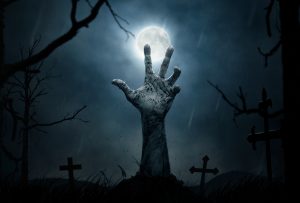The 2019 Revised Patent Subject Matter Eligibility Guidance and Ex parte Fanaru had helped to reverse the damage done by Electric Power Group., LLC v. Alstrom S.A,, but following the recent Cellspin decision, Electric Power Group may make a comeback.
 I thought the Electric Power Group decision was effectively dead. It used an overbroad characterization of patent claims under Step 1 of Mayo/Alice. The Federal Circuit panel in the case (Taranto, Bryson, and Stoll) wrote that the “focus” of the claims “is on collecting information, analyzing it, and displaying certain results of the collection and analysis.” See Elec. Power Grp., LLC v. Alstrom S.A., 119 U.S.P.Q.2d 1739, 1741 (Fed. Cir. 2016). Following that decision, I encountered many Section 101 rejections that put forth an extremely broad characterization of claims, citing Electric Power Group as authority. I saw no rebuttal until the 2019 Revised Patent Subject Matter Eligibility Guidance, 84 Fed. Reg. 50, 52 (January 7, 2019). “Claims that do not recite matter that falls within these enumerated groupings of abstract ideas should not be treated as reciting abstract ideas.” See id. at 53. The Electric Power Group decision was nowhere cited, and “collecting information” was not listed as one of the abstract ideas. Indeed, the Patent Trial and Appeal Board’s (PTAB’s) art unit 3600 soon decided that “‘collecting usage information’ … is not an abstract idea.” See Final Decision in Ex parte Fanaru, Appeal 2017-2898 at page 5 (PTAB 2019). I was thus able to use the 2019 Revised Patent Subject Matter Eligibility Guidance and Ex parte Fanaru to counter an examiner’s broad characterization of claims.
I thought the Electric Power Group decision was effectively dead. It used an overbroad characterization of patent claims under Step 1 of Mayo/Alice. The Federal Circuit panel in the case (Taranto, Bryson, and Stoll) wrote that the “focus” of the claims “is on collecting information, analyzing it, and displaying certain results of the collection and analysis.” See Elec. Power Grp., LLC v. Alstrom S.A., 119 U.S.P.Q.2d 1739, 1741 (Fed. Cir. 2016). Following that decision, I encountered many Section 101 rejections that put forth an extremely broad characterization of claims, citing Electric Power Group as authority. I saw no rebuttal until the 2019 Revised Patent Subject Matter Eligibility Guidance, 84 Fed. Reg. 50, 52 (January 7, 2019). “Claims that do not recite matter that falls within these enumerated groupings of abstract ideas should not be treated as reciting abstract ideas.” See id. at 53. The Electric Power Group decision was nowhere cited, and “collecting information” was not listed as one of the abstract ideas. Indeed, the Patent Trial and Appeal Board’s (PTAB’s) art unit 3600 soon decided that “‘collecting usage information’ … is not an abstract idea.” See Final Decision in Ex parte Fanaru, Appeal 2017-2898 at page 5 (PTAB 2019). I was thus able to use the 2019 Revised Patent Subject Matter Eligibility Guidance and Ex parte Fanaru to counter an examiner’s broad characterization of claims.
Enter, Cellspin
Now, however, Electric Power Group may make a comeback. The very recent Cellspin decision again cited to Electric Power Group to support a very broad Step 1 characterization of claims. The Federal Circuit panel (Lourie, O’Malley, and Taranto) found the claims were “drawn to the idea of capturing and transmitting data from one device to another.” See Cellspin Soft, Inc. v. Fitbit, Inc., et al., at page 16 slip opinion (CAFC, decided June 25, 2019). The claims at issue in Cellspin involved two-device Bluetooth communications between a smartphone and a fitness monitor, the details of which are not important to this article. What is important, though, is the panel then said, “we have consistently held that similar claims reciting the collection, transfer, and publishing of data are directed to an abstract idea,” and cited to the Electric Power Group decision. Cellspin argued that the district court’s claim characterization was “overly simplistic” and “ignored important limitations,” but the panel found none of those limitations “change the fact that the claims as a whole … are directed to an abstract idea.” See id. at 17.
Time to Go En Banc
The 2019 Revised Patent Subject Matter Eligibility Guidance was very helpful in overcoming some overly broad Step 1 characterizations. Now, however, examiners may once again cite to Electric Power Group to support any claim characterization. It’s time for the patent bar to engineer an en banc review of Step 1, and perhaps Cellspin is such a vehicle.

![[IPWatchdog Logo]](https://ipwatchdog.com/wp-content/themes/IPWatchdog%20-%202023/assets/images/temp/logo-small@2x.png)

![[Advertisement]](https://ipwatchdog.com/wp-content/uploads/2024/04/Patent-Litigation-Masters-2024-sidebar-early-bird-ends-Apr-21-last-chance-700x500-1.jpg)

![[Advertisement]](https://ipwatchdog.com/wp-content/uploads/2021/12/WEBINAR-336-x-280-px.png)
![[Advertisement]](https://ipwatchdog.com/wp-content/uploads/2021/12/2021-Patent-Practice-on-Demand-recorded-Feb-2021-336-x-280.jpg)
![[Advertisement]](https://ipwatchdog.com/wp-content/uploads/2021/12/Ad-4-The-Invent-Patent-System™.png)







Join the Discussion
10 comments so far.
Night Writer
July 5, 2019 09:57 am@7 Joachim Martillo
I’ve been trying to point this out for years and years on these patent blogs. Information requires time, space, and energy to transform and that the conservation of information is perhaps the most important law in physics.
The problem —again–is that many of these justices and judges have no idea what information processing is. They think it is all maths. Or an attempt to infringe on the mind. (When you think about it, then you realize how ironic it is that judges that do pretty much nothing but information processing for their money are saying that information processing is not worthy of patent eligibility.)
The whole situation is just surreal.
B
July 4, 2019 12:49 pmInvestpic was EPG 2.0, and EPG is alive and well at the PTAB.
Here’s what you need to understand. Berkheimer, which is presently before the Supreme Court, will affirm EPG in spades in the SCOTUS reverses the CAFC.
Anon
July 4, 2019 12:22 pmMr. Stein @ 6,
I hear you and saw quite the same thing (although, as I noted at post 3, I was quite successful in countering most every case.
I would further add that EPG is likely one of the cases that prompted Director Iancu to STOP having examiners try to apply case law in the 2019 (controlling)eligibility examination protocol. It truly is how amazingly bad not only the case law itself is (and here, “bad” is an objective term signifying the fact that the “Common Law” law writing is point blank contradictory – as ALSO noted by Director Iancu), but that examiners — not trained as attorneys — apply case law to circumstances of different fact patterns abysmally.
As I have noted in the past, even the CAFC outright stated that “applying” the Supreme Court “two-step” method was an exercise in writing case law through the Common Law law writing mechanism.
It is a solid argument that the judicial branch lacks this authority to substantively REWRITE statutory law that the Constitution allocates to only a single branch of the government.
It is without a doubt, IMPROPER for the Executive Branch (through the administrative agency of the Patent Office) to have examiners engage in that SAME type of Common Law law writing.
Joachim Martillo
July 4, 2019 12:14 pmIn order to follow up my comment #4 I point readers to the following paper:
Existence of an information unit as a postulate of quantum theory.
The paper above is addressing information of a different sort, but in a nutshell physicists are beginning to assert that information should not be considered the barely noticed step-child of real-ness but is rather a fundamental component of physical reality.
David Stein
July 4, 2019 10:48 amI dealt with a whole assortment of 101 rejections in 2018 based on Electric Power Group. The logic behind these rejections was as bad as Gene portrays it here: every claim that generally fit the mold of “receive data –> process it –> display it” was apparently invalid under EPG. Full Stop.
concerned
July 3, 2019 03:54 pmMy rejection had an Electric Power Group s101 rejection.
Gee, I did not realize, and neither did the 1 million plus working professionals experts in my field of invention, that simply collecting data and analyzing the same would solve this problem of 63 years. How could we be so stupid as experts?
Yet, 9 judges who never worked one day in this field of technology could see the solution and it was routine, conventional and well understood. Just collect data. Wow how easy?
Perhaps the 9 judges could next solve bank robberies and make everyone in law enforcement look stupid. Just eliminate the banks.
Of course the above sarcasm is not productive. Neither is the line of reasoning being advanced on rejections that on the surface is illogical, not truthful or real.
Joachim Martillo
July 3, 2019 01:31 pmAn invention in panning for gold is eligible. There is no logical basis (except perhaps a ipse dixit rationale) for SCOTUS and for the CAFC to hold ineligible an invention in “panning” for information.
Physicists stared at Maxwell’s equations since 1861-2 without understanding. It took a long time and a lot of work, but physicists finally internalized in the late 19th century that something which is not material can be very real.
The US Patent System won’t return to a state of health until the legal profession (including the judges) fully internalizes the logical independence of material-ness from real-ness.
Anon
July 3, 2019 01:08 pmCurious,
I too was continuing to see it – but my counters were being successful in having the examiners using that case change their tunes.
As for en banc CAFC “call-outs,” today’s should provide MUCH food for thought: http://www.cafc.uscourts.gov/sites/default/files/opinions-orders/17-2508.Order.7-3-2019.1.pdf
Curious
July 3, 2019 11:48 amElectric Power was dead? Seriously, that is still one of the most common cited cases I see coming out of the USPTO.
It’s time for the patent bar to engineer an en banc review of Step 1, and perhaps Cellspin is such a vehicle.
The Patentee won. They got a remand from the Federal Circuit. They have no desire for en banc review. Sure, they would like to have won at Step 1, but their claims are still alive, which is more than they were before the Federal Circuit issued their decision.
FYI — Electric Power isn’t too hard to distinguish when one actually reads the decision. Unfortunately, examiners rarely do.
Anon
July 3, 2019 11:02 amWhat you point to REMAINS an issue as long as the courts want to add more rope to the Gordian Knot that the Supreme Court gifted to everyone.
In other words, I doubt that EVEN going en banc would actually cut that Gordian Knot (this is due in NO small part to the fact that it is the Supreme Court itself that has created conflicting Common Law law writing for the statutory law of 35 USC 101).
As noted in the recent Tillis Congressional hearings, the Judicial Branch (including the CAFC) does NOT appear to want to actually provide any type of clarity — read that as cutting through the Gordian Knot of conflicting case law.
I had hoped that the Kavanaugh Scissors were a hopeful sign that the Court would fix its own mess, but now I believe that Congress will act first.